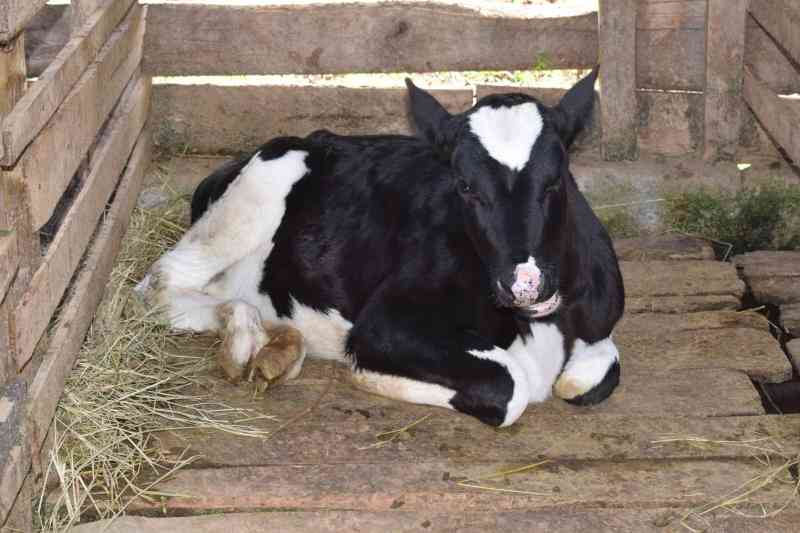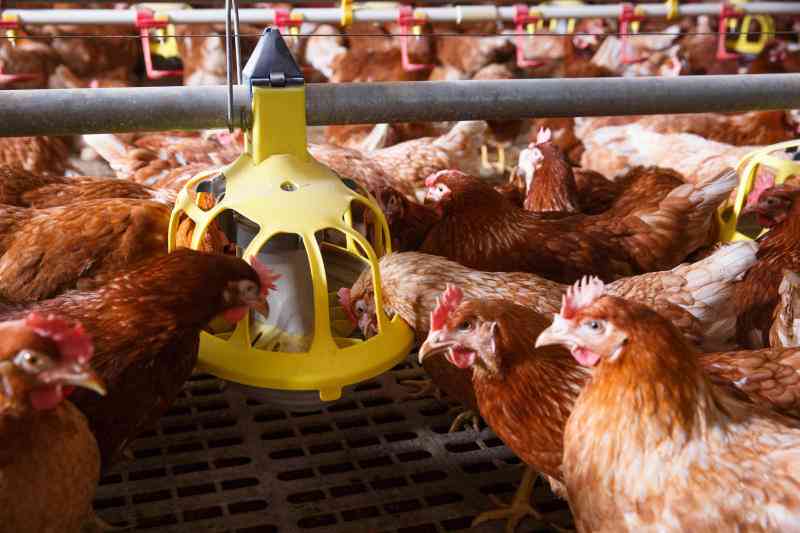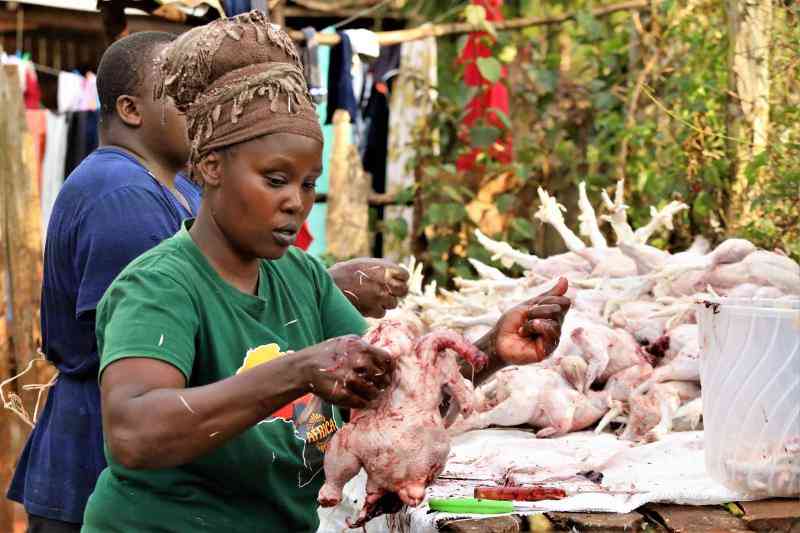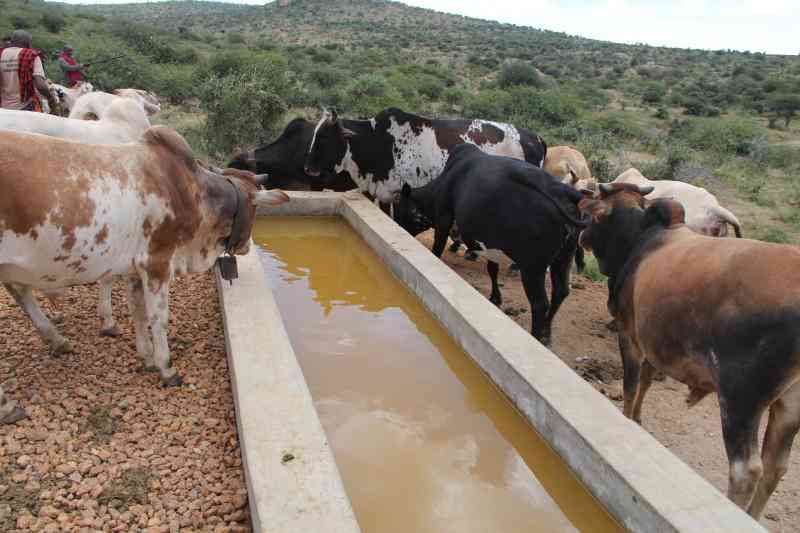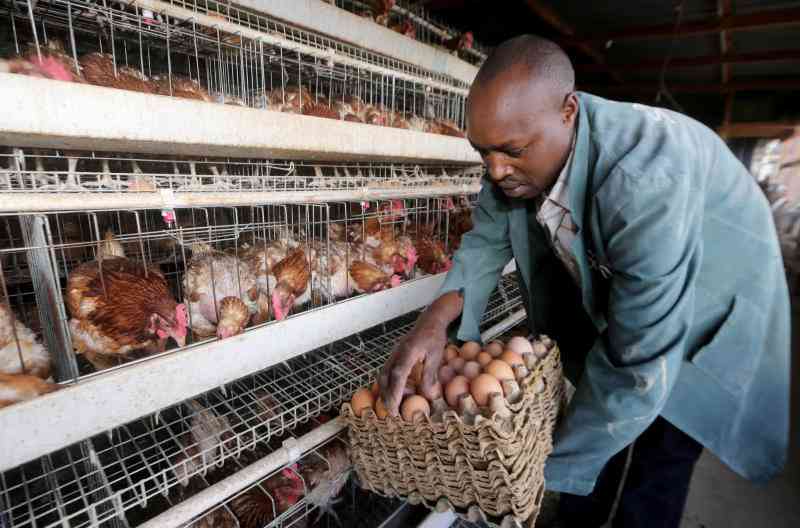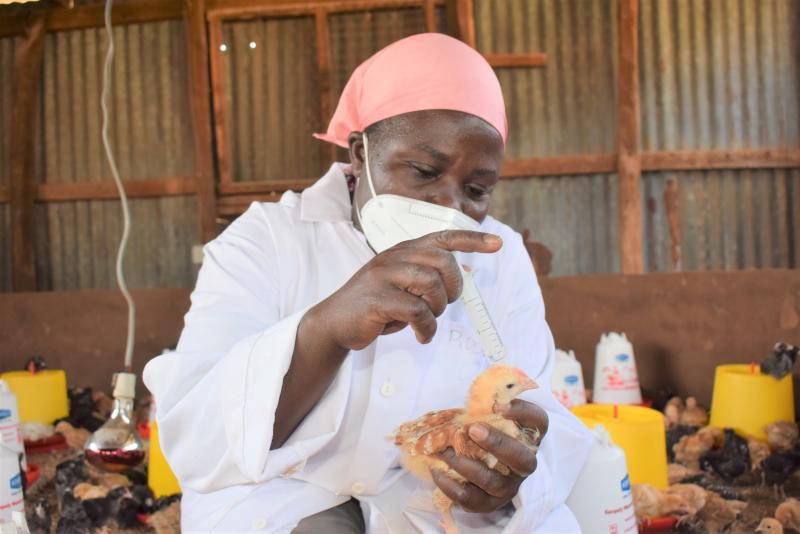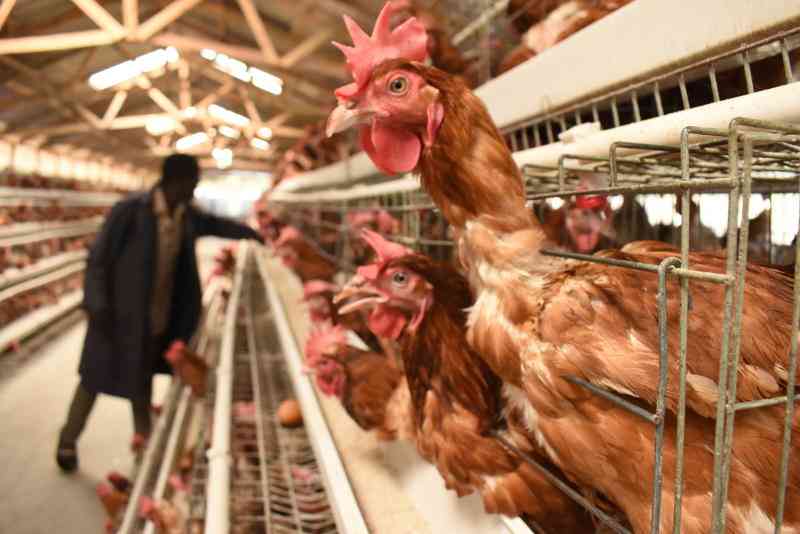
Timothy Sande at his Kamsa Poultry farm in Sinyolo, Kisumu West. [Kevine Omollo, Standard]
Of late, ambient temperatures have been on the rise in most parts of the country, as such incidents of heat stress have been reported in flocks on the finisher and egg-laying stages. Birds perform well at temperatures between 18-23 C degrees. Prolonged heat stress above 35 degrees centigrade in chickens will impact negatively flock performance, well-being and ultimately profitability of a flock. Most of our farmers grow their birds in open-sided barns that are more prone to heat stress effects as compared to birds kept in environmentally controlled units. Growing birds in an open-sided housing system in a hot environment is not always easy.
For farmers keeping birds for meat production, heat stress affects the ability to achieve daily body weight gains as per desired standards, it also negatively affects the feed conversion ratio, i.e., kilograms of feed required to produce one kg of live weight. If this is not checked, mortality rates also tend to increase especially towards cropping due to sudden death caused by heart failure as birds struggle to keep cool. For layers in such hot areas, they tend to delay in coming into lay, produce small egg size, and peak egg production persistence is shortened.
In a nutshell, heat stress will result in lethargy (sleepiness or state of inactivity), inappetence, and excessive water consumption, resulting in wet litter and loss of essential minerals from the body and dehydration. With chickens starting to feel the physical impact of heat stress in most parts of urban and peri-urban chicken-growing counties, solutions are needed to assist their physiological defenses. Here is a list of what farmers need to do.
Nutritional supplementationThere are feed supplements in the market that are nature-based, sustainable, validated and can restore metabolism in heat-stressed birds. Mannan-oligosaccharides and beta-glucans are known to improve the natural defence mechanism of chickens. Others contain such mineral supplements as sodium, potassium, calcium, and magnesium that need replenishment. Water soluble supplements also contain vitamin C a stress buster, some dextrose and antioxidants that suppress inflammatory responses to heat stress.
Structural adjustments to your existing units.Most farmers have iron-roof units. During these hot periods make use of materials that have good insulation capabilities to reduce the heat from the sun, such materials include grass or straw, makuti, sisal etc. which should be put on top of the iron sheet. If you already used the popular iron sheet material for roofing, a good white paint on the outside can help reflect direct sunlight and keep the house cool. If your units have a roof overhang, these should be elongated to prevent direct sunlight from hitting the birds on the open sides.
Use of fans and foggingIn extremely hot environments, I have advised the use of vertical fans mounted in the middle of the unit, they create horizontal air movement that has some chilling effects on the chicks. In worse cases where the external temperature is above 37 C0, the use of a fogger with narrow nozzles can spray a mist of clean water over the chickens. Please ensure that this is done without necessarily wetting the litter or feed.
Proper farm managementIt is acceptable for a farmer and in most situations to maximize the utility of his/her unit, however, during hot weather, it is only prudent that we reduce the stocking density of the birds in the units. This will help create more feeding and drinking space and allow quick dispensation of heat generated from adjacent birds. Ensure your water flow rate is consistent, for layer units, the flow rate should target 200-300 ml/hen. If you are using non-automatic bell drinkers, they must be replenished quickly. Provide at most 80 birds per standard bell drinker. For the nipple drinking system ensure that you have 1 nipple per 5 chickens and constantly checked that they are working. Water pipes should run below the ground if possible and not be exposed directly to the sun. Constantly provide cool plenty of drinking water (10-120C) by adding iced water into the tanks. Try feeding birds during the cool part of the day and avoid mash diets where you can.
[For additional information, please contact Watson Messo Odwako [email protected]]
 The Standard Group Plc is a multi-media organization with investments in media platforms spanning newspaper print
operations, television, radio broadcasting, digital and online services. The Standard Group is recognized as a
leading multi-media house in Kenya with a key influence in matters of national and international interest.
The Standard Group Plc is a multi-media organization with investments in media platforms spanning newspaper print
operations, television, radio broadcasting, digital and online services. The Standard Group is recognized as a
leading multi-media house in Kenya with a key influence in matters of national and international interest.

